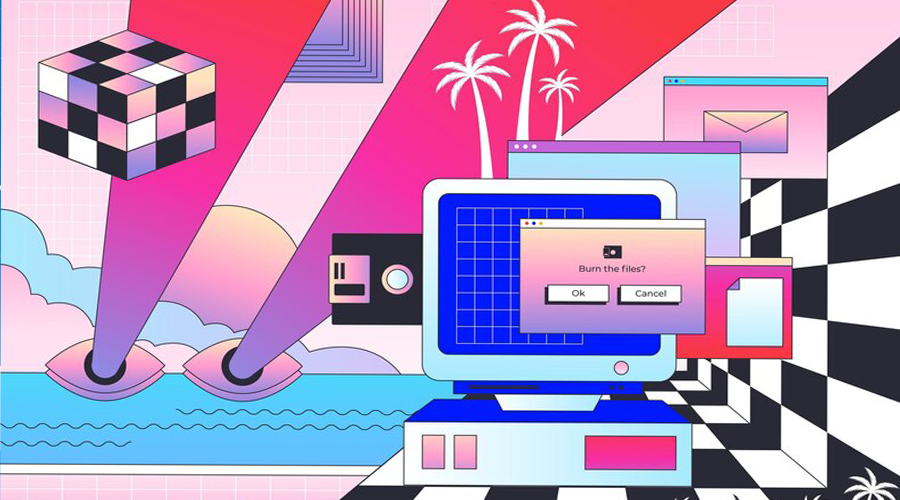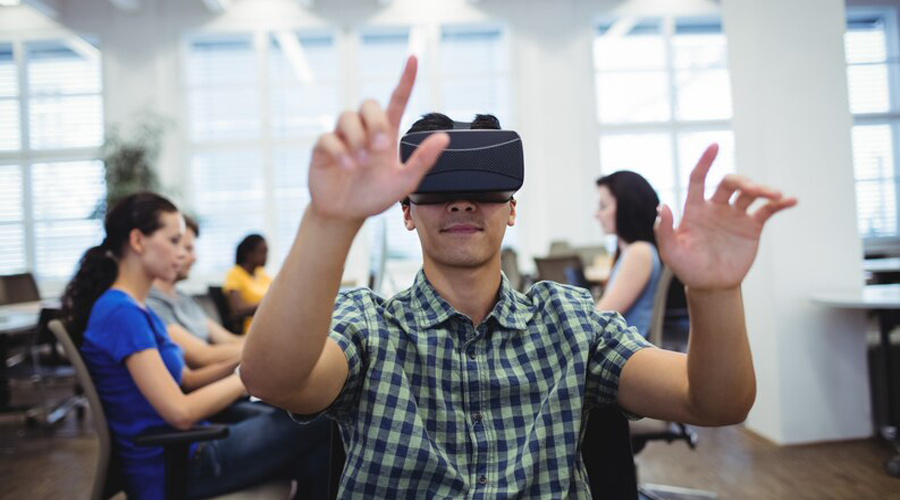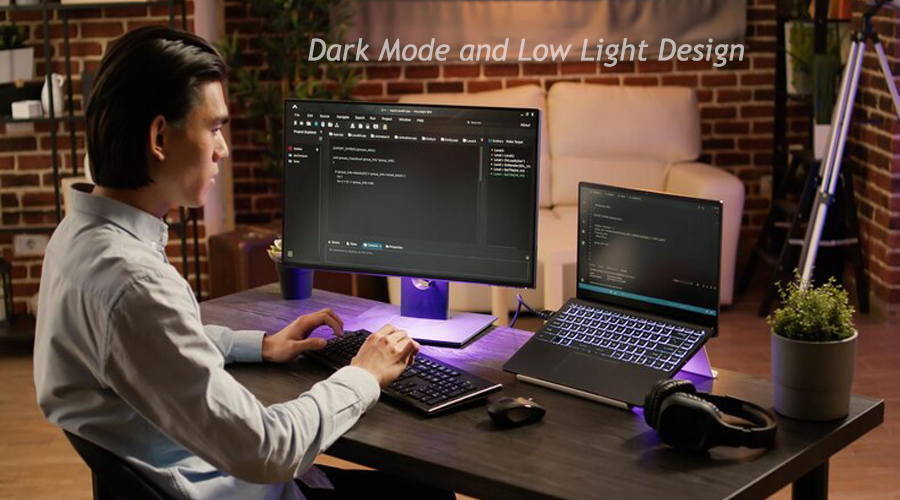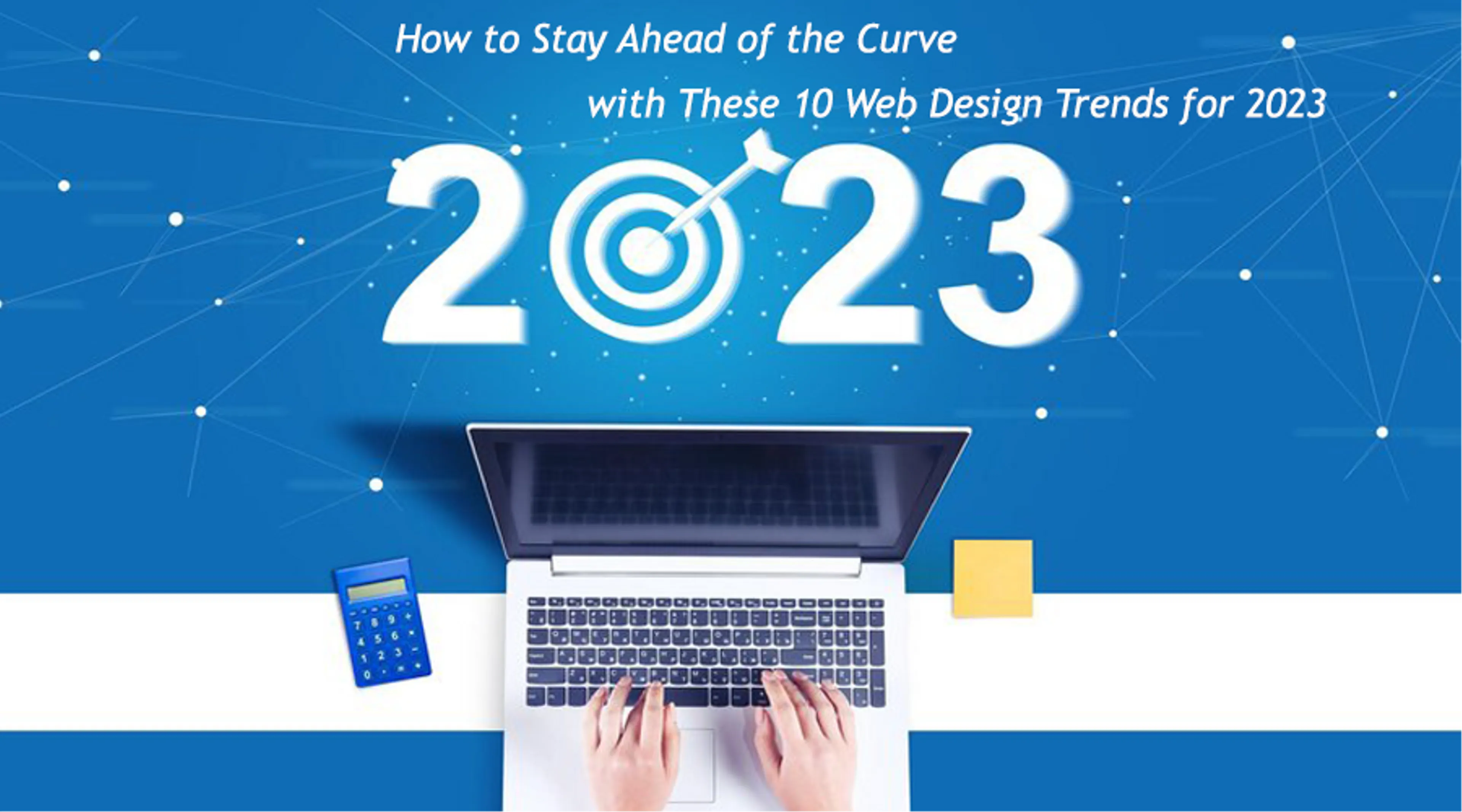Web design is more than just a visual presentation of your business and products. It is also a way to communicate with your customers, showcase your brand personality, and create a memorable user experience. That’s why it’s important to keep up with the latest web design trends and techniques that can help you stand out from the competition and attract more visitors.
However, web design is also a fast-changing and dynamic field that requires constant learning and adaptation. What works today may not work tomorrow, and what looks fresh and innovative now may look outdated and boring. How can you stay ahead of the curve and create a website that is both relevant and engaging for your target audience?
In this article, we will help you answer this question by showing you 10 web design trends that will dominate in 2023. These trends are based on current user preferences, technological advancements, and cultural influences. We will explain what each trend is, how it works, and what are the benefits and drawbacks of using it in your web design. We will also give you some examples of websites that use these trends effectively. By the end of this article, you will have a better understanding of what web design trends to follow and how to implement them in your own website.
See more: https://webfity.com/blog/how-to-integrate-ecommerce-and-marketing-tools-with-a-free-website-builder
Nostalgia and Retrofuturism
Nostalgia is a powerful emotion that can evoke positive feelings and memories of the past. It can also inspire creativity and innovation by revisiting old styles and trends and giving them a new twist. Retrofuturism is a subgenre of nostalgia that combines elements of retro aesthetics with futuristic technology and concepts. It creates a contrast between the past and the future and challenges the expectations of both.
Nostalgia and retrofuturism are popular web design trends because they can appeal to different generations of users, from millennials who grew up in the 80s and 90s, to Gen Z who are fascinated by the digital era. They can also create a unique and distinctive visual identity for your brand, as well as a sense of nostalgia for your products or services.

Some web design styles that evoke nostalgia and retrofuturism are
- Vaporwave: A style that uses bright neon colors, geometric shapes, pixelated fonts, and glitch effects to create a surreal and nostalgic atmosphere.
- Glitch: A style that uses intentional errors, distortions, and noise to create a dynamic and edgy look.
- Cybercore: A style that uses dark colors, metallic textures, neon lights, and cyberpunk elements to create a futuristic and dystopian vibe.
Some benefits of using nostalgia and retrofuturism in web design are
- They can create an emotional connection with your users by triggering positive memories or curiosity.
- They can make your website stand out from the crowd by using unique and creative visuals.
- They can showcase your brand personality and values by referencing specific themes or eras.
Some drawbacks of using nostalgia and retrofuturism in web design are
- They can alienate some users who need to become more familiar with or interested in the references or aesthetics.
- They can distract from your content or message if they are overused or poorly executed.
- They can become outdated or cliché if they are not updated or refreshed regularly.
Here are some examples of websites that use nostalgia and retrofuturism in their web design:
- Poolside FM: A website that recreates the look and feel of a vintage Macintosh computer with a vaporwave-inspired music player.
- Stranger Things: A website that promotes the Netflix series with a glitchy and retro interface that mimics an old TV screen.
- Cyberpunk 2077: A website that showcases the video game with a cyber core-inspired design that features dark colors, neon lights, and futuristic elements.
Immersive and Interactive Experiences
Immersive and interactive experiences are web design techniques that aim to engage users in more active and meaningful ways. They use various web design elements and features to create a more immersive and interactive environment for users, such as video backgrounds, parallax scrolling, AR/VR, etc. They aim to capture users’ attention, stimulate their senses, and enhance their satisfaction.
Immersive and interactive experiences are popular web design trends because they can create a more memorable and enjoyable user experience. They can also showcase your products or services in a more realistic and engaging way, and increase your conversion rates and customer loyalty.

Some web design techniques that create immersive and interactive experiences are
- Video backgrounds: A technique that uses video footage as the background instead of a static image. It can create a more dynamic and captivating visual effect, and convey your brand message more effectively.
- Parallax scrolling: A technique that creates an illusion of depth and movement by making different layers of the web page move at different speeds when scrolling. It can create a more immersive and interactive feeling, and draw users’ attention to important elements.
- AR/VR: A technique that uses augmented reality (AR) or virtual reality (VR) technology to create a more realistic and immersive experience for users. It can allow users to interact with your products or services in a more direct and personal way, and increase their engagement and trust.
Some benefits of using immersive and interactive experiences in web design are
- They can create a more memorable and enjoyable user experience by stimulating their senses and emotions.
- They can showcase your products or services in a more realistic and engaging way by allowing users to see, hear, or even touch them.
- They can increase your conversion rates and customer loyalty by creating a more positive and lasting impression of your brand.
Some drawbacks of using immersive and interactive experiences in web design are
- They can slow down your website's loading speed or performance if they are not optimized or compatible with different devices or browsers.
- They can overwhelm or annoy some users if they are too intrusive or distracting from the main content or purpose of the website.
- They can require more resources and expertise to create and maintain than other web design techniques.
Here are some examples of websites that use immersive and interactive experiences in their web design
- Apple: A website that uses video backgrounds, parallax scrolling, and AR to showcase its products in a stunning and realistic way.
- The Boat: A website that uses parallax scrolling, animation, sound effects, and storytelling to create an immersive and interactive experience for users.
- Within: A website that uses VR technology to offer users a variety of immersive and interactive experiences in different genres and themes.
Accessibility and Inclusivity
Accessibility and inclusivity are web design principles that aim to make websites accessible and inclusive for all users, regardless of their abilities, preferences, or backgrounds. They use various web design best practices and standards to improve websites' usability, functionality, and diversity, such as color contrast, font size, captions, alt text, etc. They aim to eliminate barriers and biases that may prevent users from accessing or enjoying websites.
Accessibility and inclusivity are important to web design trends because they can benefit both users and businesses. They can improve user satisfaction, engagement, and loyalty by making websites more user-friendly and respectful. They can also increase website traffic, reach, and reputation by making websites more compliant and appealing to a wider audience.

Some web design best practices that improve accessibility and inclusivity are
- Color contrast: A practice that ensures that the colors used on a website have enough contrast to be easily seen and read by users, especially those with visual impairments or color blindness.
- Font size: A practice that ensures that the text size used on a website is large enough to be easily read by users, especially those with low vision or reading difficulties.
- Captions: A practice that provides text alternatives for audio content on a website, such as videos or podcasts. It can help users who are deaf or hard of hearing, or who prefer to read rather than listen.
- Alt text: A practice that provides text descriptions for images on a website. It can help users who are blind or visually impaired, or who use screen readers or other assistive technologies.
- Language and culture: A practice that considers the language and culture of the target audience of a website. It can include using clear and simple language, providing translation options, using appropriate symbols and icons, and avoiding stereotypes or offensive content.
Some benefits of using accessibility and inclusivity in web design are
- They can improve user satisfaction, engagement, and loyalty by making websites more user-friendly and respectful.
- They can increase website traffic, reach, and reputation by making websites more compliant and appealing to a wider audience.
- They can reduce legal risks and costs by making websites more aligned with web accessibility laws and guidelines.
Some drawbacks of using accessibility and inclusivity in web design are
- They can require more time and effort to implement and test than other web design practices.
- They can limit some creative choices or options in web design due to technical or ethical constraints.
- They can vary depending on different regions or contexts, requiring constant updates or adaptations.
Here are some examples of websites that use accessibility and inclusivity in their web design
- BBC: A website that uses color contrast, font size, captions, alt text, and language options to make its content accessible and inclusive for all users.
- Airbnb: A website that uses clear and simple language, appropriate symbols and icons, and diverse images to make its website inclusive and respectful for different cultures and backgrounds.
- Be My Eyes: A website that uses a simple and intuitive interface, a large and bold font, and a high-contrast color scheme to make its website accessible and helpful for blind and visually impaired users.
- See more: https://webfity.com/blog/website-features-you-need-to-have-in-2023
Minimalism and Simplicity
Minimalism and simplicity are web design styles that use minimal elements and features to create a clean and elegant look. They focus on the essential content and functionality of a website and avoid unnecessary distractions or clutter. They use white space, monochrome colors, simple fonts, and clear layouts to create a sense of harmony and balance.
Minimalism and simplicity are timeless web design trends because they can improve user experience and performance. They can make websites easier to navigate, understand, and use. They can also make websites faster to load, more responsive, and more compatible with different devices and browsers.
Some web design styles that embrace minimalism and simplicity are
- Flat design: A style that uses flat colors, shapes, and icons to create a minimalist and modern look. It avoids gradients, shadows, textures, or other 3D effects that may add complexity or realism.
- White space: A style that uses empty or negative space to create a minimalist and elegant look. It creates contrast, hierarchy, and focus on the important elements of a website.
- Monochrome: A style that uses one color or a limited color palette to create a minimalist and harmonious look. It creates consistency, mood, and emphasis on the content of a website.
- Simple fonts: A style that uses simple and legible fonts to create a minimalist and clean look. It avoids fancy or decorative fonts that may distract or confuse users.
Some benefits of using minimalism and simplicity in web design are
- They can improve user experience and performance by making websites easier to navigate, understand, and use.
- They can make websites faster to load, more responsive, and more compatible with different devices and browsers.
- They can make websites more elegant, professional, and sophisticated by creating a sense of harmony and balance.
Some drawbacks of using minimalism and simplicity in web design are
- They can make websites too plain, boring, or generic if they lack personality or differentiation.
- They can make websites too sparse, cold, or impersonal if they lack emotion or warmth.
- They can make websites too restrictive or limiting if they lack flexibility or functionality.
Here are some examples of websites that use minimalism and simplicity in their web design
- Dropbox: A website that uses flat design, white space, and simple fonts to create a minimalist and modern look. It focuses on the essential functionality and features of its cloud storage service.
- Apple: A website that uses white space, monochrome colors, and simple fonts to create a minimalist and elegant look. It showcases its products and services in a clear and sophisticated way.
- Medium: A website that uses white space, simple fonts, and a limited color palette to create a minimalist and harmonious look. It emphasizes the content and readability of its articles and stories.
Personalization and Customization
Personalization and customization are web design features that allow users to tailor their website experience according to their preferences, needs, or interests. They use various web design elements and tools to provide users with options, recommendations, or feedback that are relevant and useful for them. They aim to increase user satisfaction, engagement, and loyalty by making websites more user-centric and adaptive.
Personalization and customization are growing web design trends because they can create a more positive and lasting impression of your brand. They can also increase your conversion rates and customer retention by making users feel more valued and understood. They can also help you gain more insights and data about your users by tracking their behavior and feedback.

Some web design features that enable personalization and customization are
- Cookies: A feature that uses small pieces of data stored on users’ browsers to remember their preferences, settings, or actions on a website. It can help users save time, avoid repetition, or access personalized content or offers.
- Chatbots: A feature that uses artificial intelligence (AI) or natural language processing (NLP) to simulate a conversation with users on a website. It can help users get answers, suggestions, or assistance in a friendly and interactive way.
- Quizzes: A feature that uses questions, answers, or ratings to collect information from users on a website. It can help users discover their personality type, preferences, or recommendations in a fun and engaging way.
Some benefits of using personalization and customization in web design are
- They can increase user satisfaction, engagement, and loyalty by making websites more user-centric and adaptive.
- They can increase conversion rates and customer retention by making users feel more valued and understood.
- They can help you gain more insights and data about your users by tracking their behavior and feedback.
Some drawbacks of using personalization and customization in web design are
- They can compromise user privacy or security if they collect or store sensitive or personal data without consent or protection.
- They can annoy or frustrate some users if they are too intrusive or inaccurate in their suggestions or feedback.
- They can require more resources and expertise to create and maintain than other web design features.
Dark Mode and Low Light Design
Another web design trend that is gaining popularity in 2023 is dark mode and low light design. These are web design options that offer a darker or dimmer color scheme for web pages, icons, and other elements. Dark mode and low light design can have several benefits for users, such as:
- Reducing eye strain and fatigue, especially in low-light environments or at night
- Saving battery life on mobile devices, as darker colors consume less power
- Enhancing contrast and readability of text and images
- Creating a sleek and modern aesthetic that appeals to some users
However, dark mode and low light design also have some drawbacks, such as
- Making some colors or elements less visible or attractive
- Affecting the mood or emotion of the web page content
- Requiring extra effort and testing to ensure compatibility and consistency across different devices and browsers
Therefore, web designers should consider the pros and cons of using dark mode and low light design in their web pages, and provide users with the option to switch between different modes according to their preferences and needs.

Voice Interfaces and Conversational Design
Voice interfaces and conversational design are another web design trend that is becoming more common in 2023. These are web design tools that support voice interaction and natural language processing, such as speech recognition, voice assistants, chatbots, etc. Voice interfaces and conversational design can make web pages more accessible, interactive, and engaging for users, such as:
- Allowing users to use voice commands or questions to navigate or search the web page
- Providing users with personalized and relevant responses or feedback
- Creating a more human-like and friendly experience for users
- Reducing the need for typing or clicking on the web page
However, voice interfaces and conversational design also have some challenges, such as
- Ensuring the accuracy and reliability of voice recognition and natural language processing
- Maintaining the privacy and security of user data and voice input
- Designing the tone, style, and personality of the voice interface or conversational agent
- Balancing the use of voice interaction with other modalities, such as text or graphics
Therefore, web designers should consider the best practices and guidelines for creating voice interfaces and conversational design in their web pages, and test them with different users and scenarios to ensure optimal performance and user satisfaction.
Animation and Motion Design
Animation and motion design is another web design trend that is adding more visual interest and dynamism to web pages in 2023. These are web design elements that use animation and motion effects, such as loading screens, hover effects, transitions, etc. Animation and motion design can have several benefits for users, such as:
- Attracting user attention and curiosity
- Enhancing user feedback and interaction
- Adding more personality and emotion to the web page content
- Creating a more immersive and memorable experience for users
However, animation and motion design also has some drawbacks, such as
- Increasing the loading time and bandwidth consumption of the web page
- Distracting or annoying users with excessive or unnecessary animation or motion effects
- Causing accessibility or usability issues for some users, such as those with motion sensitivity or visual impairment
- Requiring more skill and creativity to design and implement animation or motion effects
Therefore, web designers should consider the principles and techniques of animation and motion design in their web pages, and use them sparingly and strategically to enhance user experience and engagement.
No-Code Tools and Platforms
No-code tools and platforms are another web design trend that is simplifying web development and empowering more users to create websites without coding in 2023. These are web design tools and platforms that enable users to create websites using drag-and-drop interfaces, templates, widgets, etc. No-code tools and platforms can have several benefits for users, such as:
- Reducing the time and cost of web development
- Allowing users to customize and update their websites easily and quickly
- Enabling users to experiment and test different web design options and features
- Expanding the accessibility and diversity of web design and creation
However, no-code tools and platforms also have some limitations, such as
- Restricting the flexibility and functionality of web design and development
- Depending on the quality and reliability of the no-code tool or platform provider
- Requiring users to learn and master the no-code tool or platform interface and features
- Competing with other users who use the same or similar no-code tool or platform
Therefore, web designers should consider the advantages and disadvantages of using no-code tools and platforms in their web design and development, and choose the best no-code tool or platform that suits their needs and goals.
Experimental Web Design
Experimental web design is another web design trend that is challenging conventional web standards and showcasing creativity and innovation in 2023. These are web designs that break the rules and norms of web design and development, such as layout, typography, color, navigation, etc. Experimental web design can have several benefits for users, such as:
- Stimulating user curiosity and interest
- Differentiating the web page from other similar or competing web pages
- Expressing the unique identity and vision of the web page owner or creator
- Inspiring new ideas and possibilities for web design and development
However, experimental web design also has some risks, such as
- Confusing or frustrating users with unfamiliar or unconventional web design elements
- Affecting the performance and compatibility of the web page across different devices and browsers
- Violating the accessibility and usability standards and guidelines of web design and development
- Alienating or offending some users with controversial or inappropriate web design elements
Therefore, web designers should consider the goals and outcomes of using experimental web design in their web pages, and balance their creativity and innovation with user expectations and needs.
Conclusion Web Design Trends for 2023
Web design is an important aspect of online presence and communication for businesses and customers. Web design trends are constantly evolving and changing to reflect the needs and preferences of users and the opportunities and challenges of technology. In this article, we have discussed 10 web design trends that are expected to dominate in 2023, such as nostalgia and retrofuturism, immersive and interactive experiences, accessibility and inclusivity, minimalism and simplicity, personalization and customization, dark mode and low light design, voice interfaces and conversational design, animation and motion design, no-code tools and platforms, and experimental web design. These trends offer various benefits and drawbacks for users and web designers and require careful consideration and implementation to ensure optimal user experience and engagement. By staying ahead of the curve with these 10 web design trends for 2023, web designers can create more attractive, functional, and memorable websites for their audiences.
